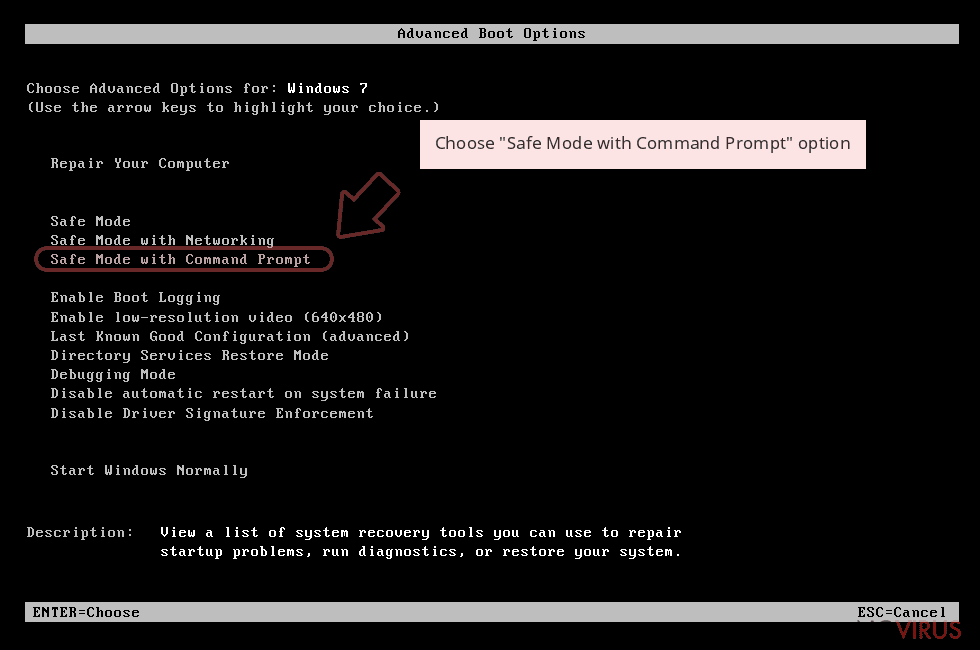Uninstall Chimera virus (Free Removal Instructions) - Aug 2016 updated
Chimera virus Removal Guide
Description of Chimera ransomware
The key principles of the Chimera virus:
Along with viruses like Locky or CryptXXX, the Chimera virus in a cyber infection which is designed to bring quick profit for its creators. Though the initial preparations and programming of the malicious script may take some time, the efforts are likely to pay back after the virus is released on the web. The ransomware viruses have been proven especially profitable in the last couple of year, so Chimera creators have also decided to give it a go, too, since there are so many successful examples to look up to. Unfortunately for the makers of this virus, this project soon went south regardless of the efforts to keep it going to its fullest potential. Ironically, the virus was hacked itself and its source code was used to develop other cyber infections, including the notorious Mischa and its predecessor Petya ransomware. The same group of hackers also published over 3500 decryption keys completely destroying the Chimera project. These keys allowed the virus researchers to come up with Chimera Decryptor which is now freely accessible online. If you have been infected, worry no more! Go ahead, remove Chimera from your PC and get your files back. Remember to scan your system with FortectIntego before you run the decryptor!

To elaborate a bit more about the functionality of this virus it is important to note that Chimera ransomware uses .crypt file extension to indicate the encrypted data. The same extension is used by many other ransomware, for instance, one of the initial CryptXXX versions as well. After all of the regular extensions of the predetermined files on the computer are replaced with .crypt, and the victim loses access to all of his/her important data, the virus creates a file featuring a ransom note, explaining the situation. In this note the victims are demanded to pay $617-$1610 USD. Otherwise they are threatened that their personal data will be released publicly. Fortunately, there are no reported cases of such data leaks, simply because the virus was quickly decontaminated. In case some version of the infection still managed to reach your computer, keep calm and proceed to the Chimera removal.
Virus distribution and infiltration techniques:
Ransomware viruses differ from other, less serious viruses and potentially unwanted programs because they often pretend to be something other than they really are. This deceptive approach allows them to enter victim’s computers undetected and start ravaging through them immediately. But what are these methods of infiltration exactly? Here are several most common ways Chimera takes over computers:
- Email. The most common way ransomware viruses spread is email attachments. The malicious virus script disguises itself as a Word or Javascript document and is distributed via spam emails. When the user unknowingly downloads such a file, the ransomware activates itself, and you know the rest of the story yourself.
- Corrupted ads. Compared to ransomware, adware viruses look quite innocent. However, they can be evil apprentices of the ransomware infection too. These ad-based programs stuff the browser with an extensive amount of ads and links which are often unverified, so naturally, not always safe. By clicking on a corrupted add, you may download a ransomware virus on your device directly or be rerouted to a site which involves in ransomware distribution and gets tricked into installing an infected application as well.
- Software downloads. As we have already mentioned, Chimera ransomware can secretly crawl into your computer after your download some infected application. Such applications usually carry a Trojan virus which later helps the ransomware to get installed on the computer, bypassing all the systems of defence.
Things to remember before taking up Chimera removal:
If your device got infected with Chimera ransomware, quick reaction is the key. The first thing you should do after noticing first signs of an infection is to disconnect your computer from the network. The quicker you do that, the more files you will likely save from being locked since the virus Command/Control center needs a constant connection to perform the encryption. Then, you can proceed to the Chimera removal. This process should be automatic, though you might need to adjust some things manually as well. Be careful and use only the reliable antivirus software to deal with the virus. Take note: to keep your data safe from similar attacks in the future, make backup copies of your files and keep them safely stored on external storage drives.
Getting rid of Chimera virus. Follow these steps
In-depth guide for the Chimera elimination
Important! →
The elimination guide can appear too difficult if you are not tech-savvy. It requires some knowledge of computer processes since it includes system changes that need to be performed correctly. You need to take steps carefully and follow the guide avoiding any issues created due to improper setting changes. Automatic methods might suit you better if you find the guide too difficult.
Step 1. Launch Safe Mode with Networking
Safe Mode environment offers better results of manual virus removal
Windows 7 / Vista / XP
- Go to Start.
- Choose Shutdown, then Restart, and OK.
- When your computer boots, start pressing the F8 button (if that does not work, try F2, F12, Del, etc. – it all depends on your motherboard model) a few times until you see the Advanced Boot Options window.
- Select Safe Mode with Networking from the list.
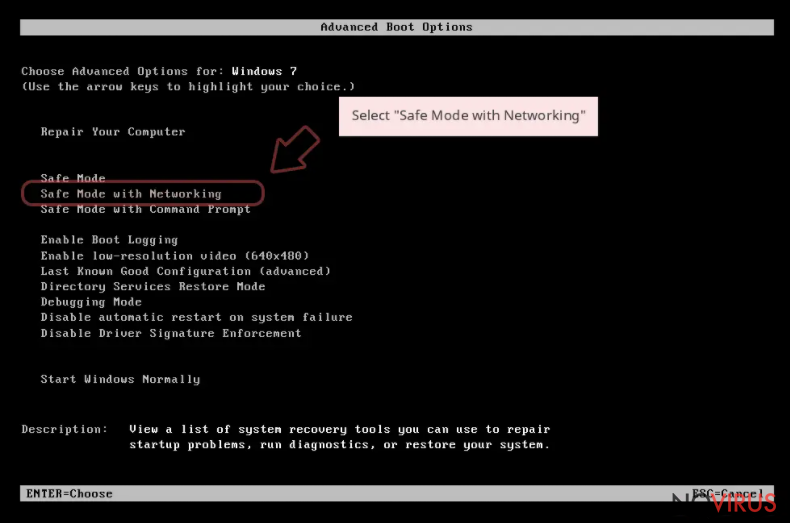
Windows 10 / Windows 8
- Right-click the Start button and choose Settings.
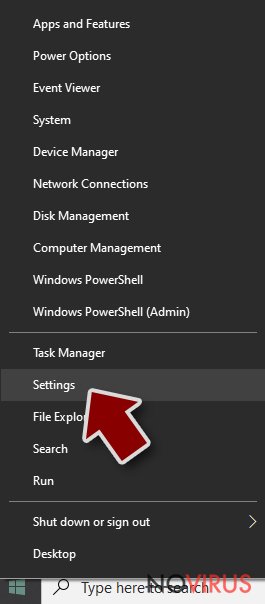
- Scroll down to find Update & Security.
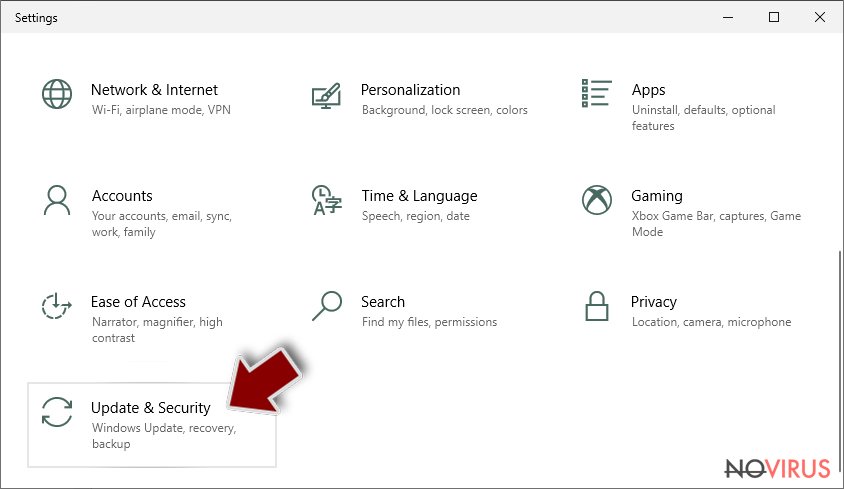
- On the left, pick Recovery.
- Scroll to find Advanced Startup section.
- Click Restart now.
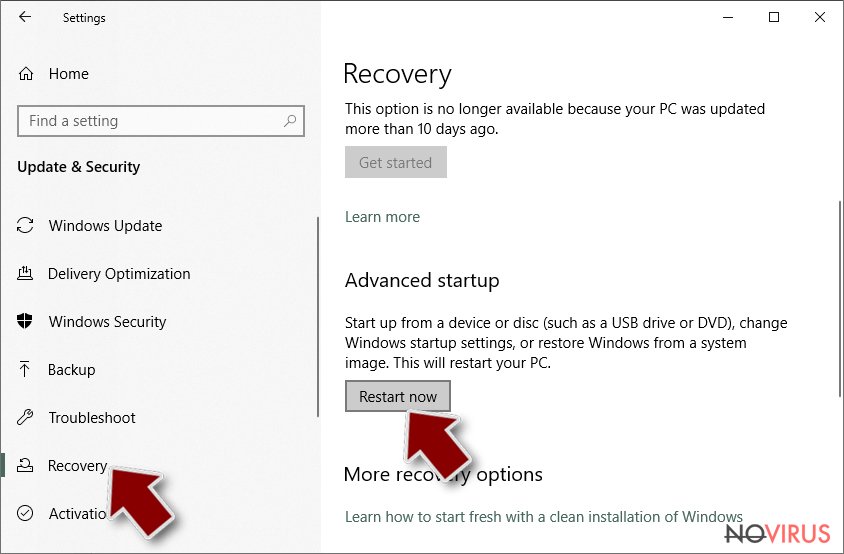
- Choose Troubleshoot.
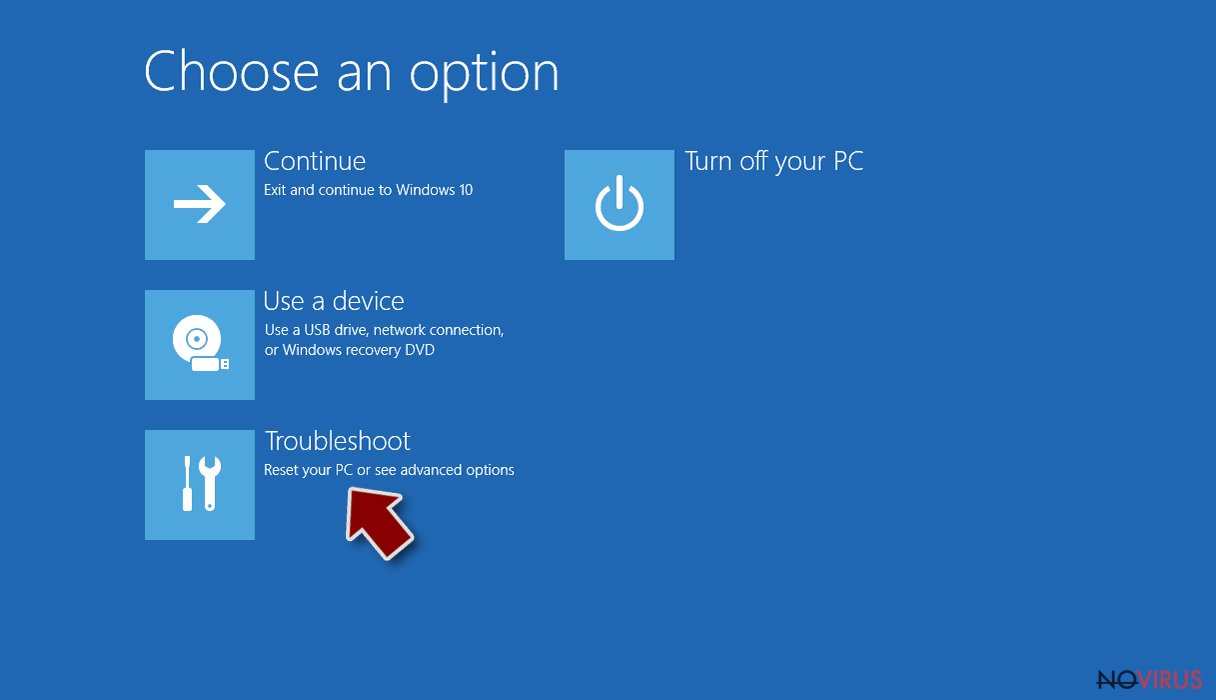
- Go to Advanced options.
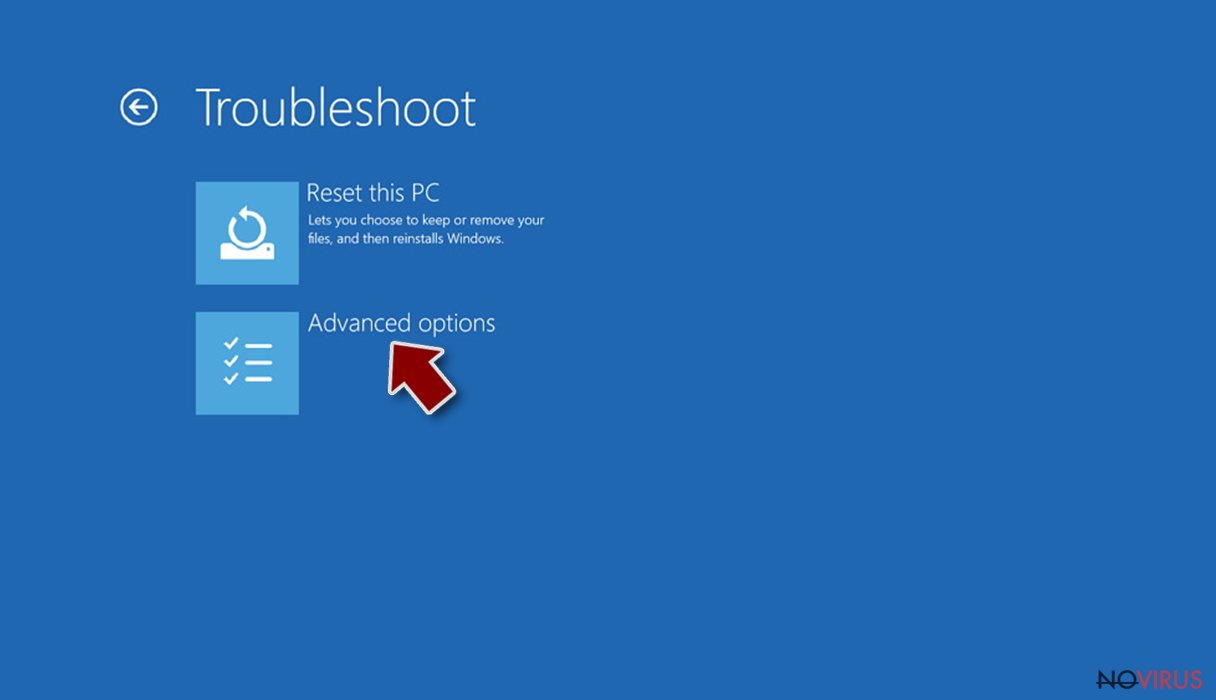
- Select Startup Settings.
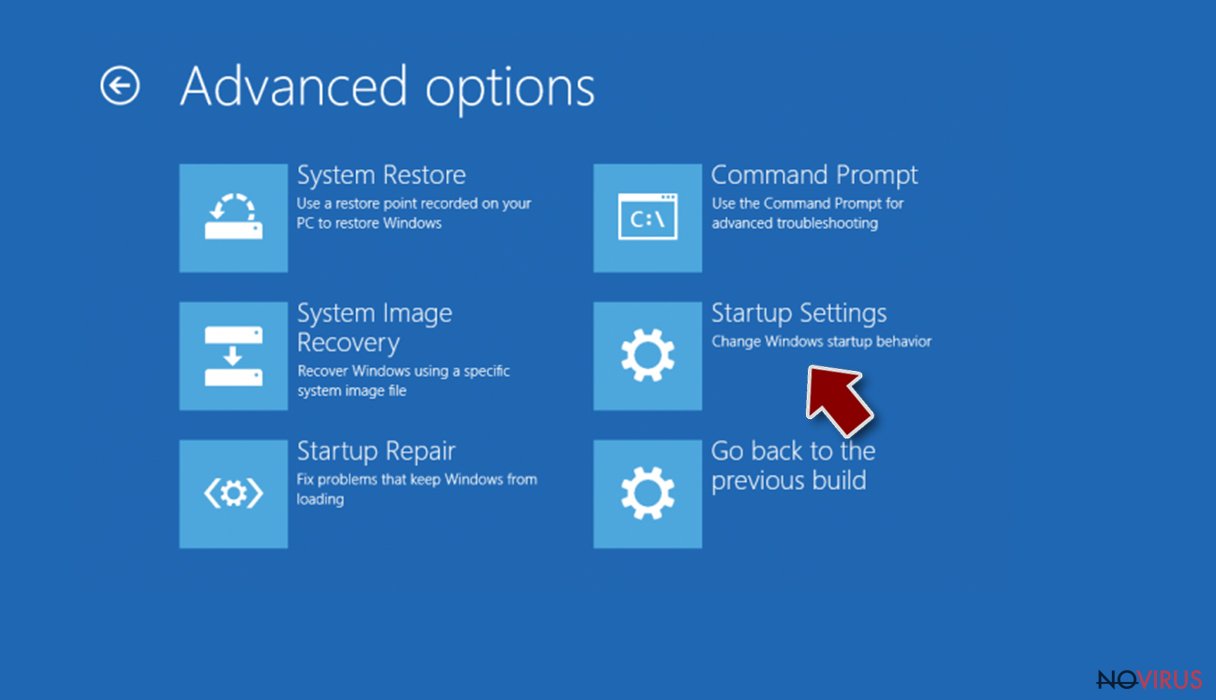
- Press Restart.
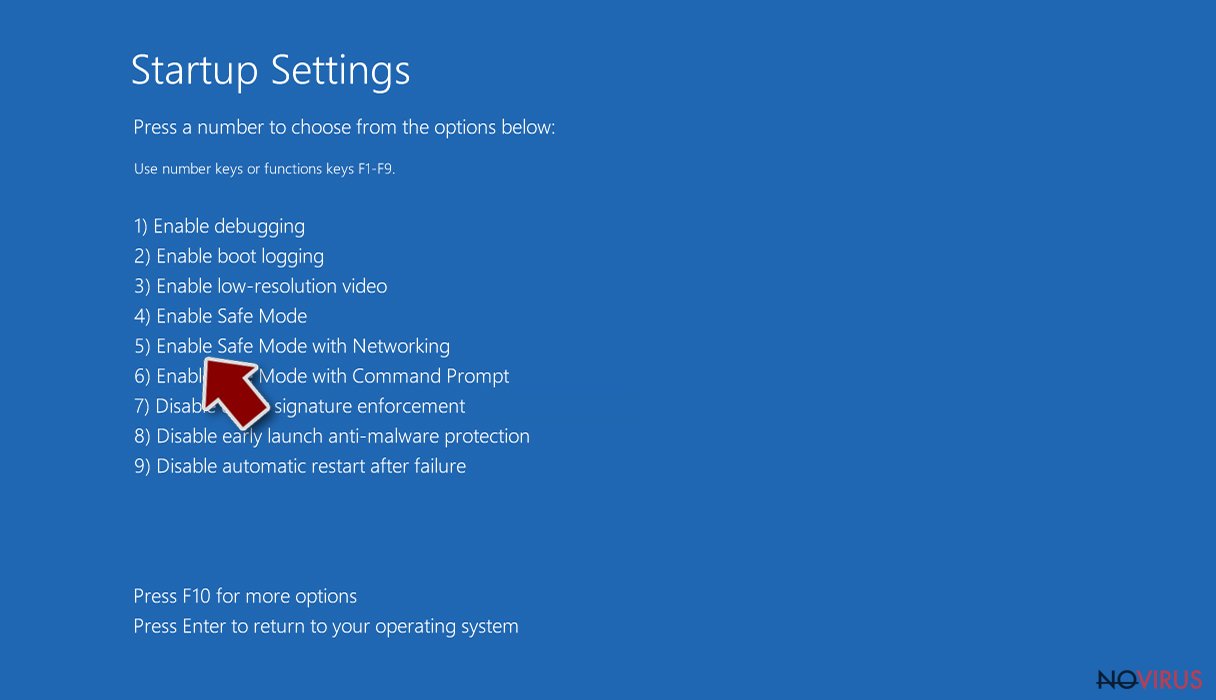
- Choose 5) Enable Safe Mode with Networking.
Step 2. End questionable processes
You can rely on Windows Task Manager that finds all the random processes in the background. When the intruder is triggering any processes, you can shut them down:
- Press Ctrl + Shift + Esc keys to open Windows Task Manager.
- Click on More details.
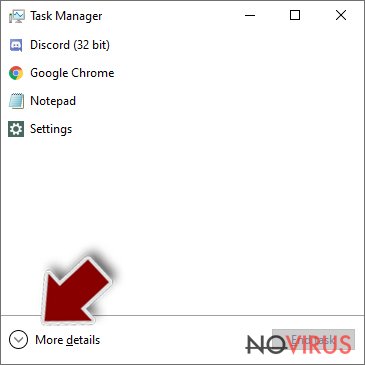
- Scroll down to Background processes.
- Look for anything suspicious.
- Right-click and select Open file location.
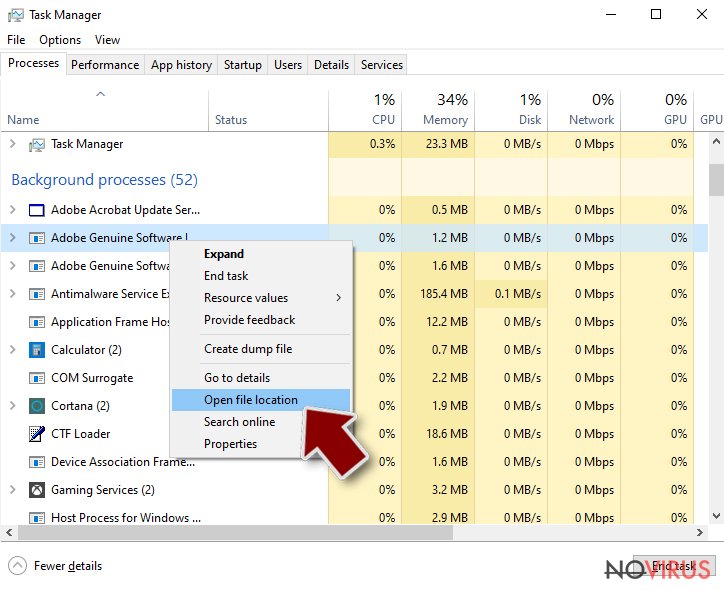
- Go back to the Process tab, right-click and pick End Task.
- Delete the contents of the malicious folder.
Step 3. Check the program in Startup
- Press Ctrl + Shift + Esc on your keyboard again.
- Go to the Startup tab.
- Right-click on the suspicious app and pick Disable.
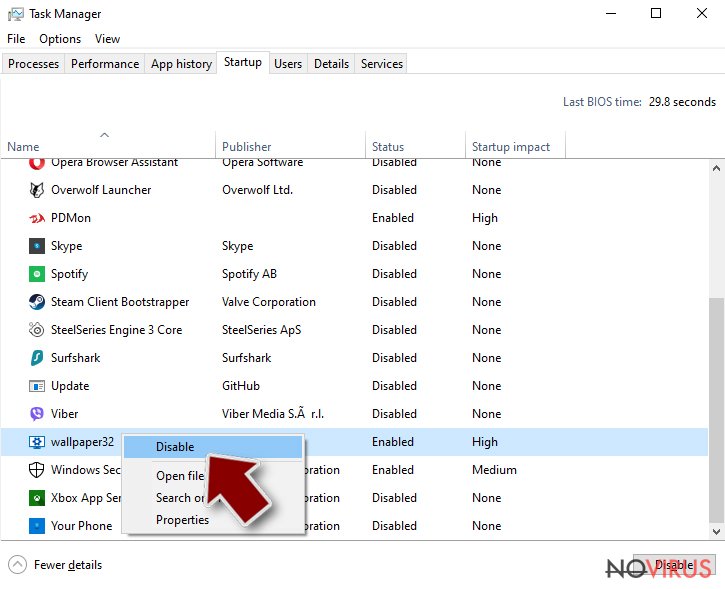
Step 4. Find and eliminate virus files
Data related to the infection can be hidden in various places. Follow the steps and you can find them:
- Type in Disk Cleanup in Windows search and press Enter.
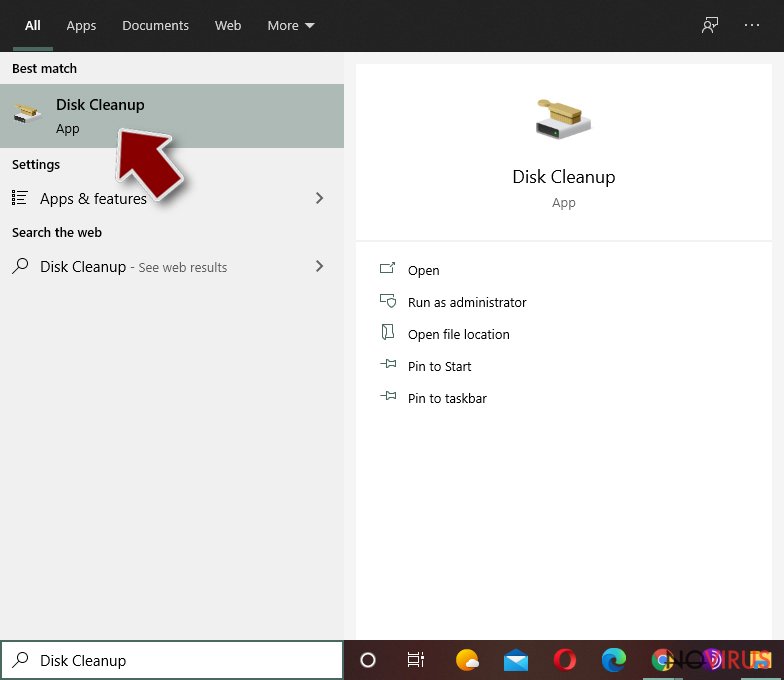
- Select the drive (C: is your main drive by default and is likely to be the one that has malicious files in) you want to clean.
- Scroll through the Files to delete and select the following:
Temporary Internet Files
Downloads
Recycle Bin
Temporary files - Pick Clean up system files.
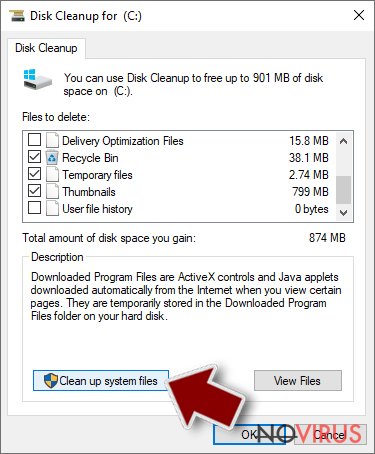
- You can also look for other malicious files hidden in the following folders (type these entries in Windows Search and press Enter):
%AppData%
%LocalAppData%
%ProgramData%
%WinDir%
After you are finished, reboot the PC in normal mode.
Eliminate Chimera using System Restore
-
Step 1: Restart your computer in Safe Mode with Command Prompt
Windows 7 / Vista / XP- Go to Start → Shutdown → Restart → OK.
- As soon as your computer starts, start pressing F8 key repeatedly before the Windows logo shows up.
-
Choose Command Prompt from the list

Windows 10 / Windows 8- Click on the Power button at the Windows login screen, and then press and hold Shift key on your keyboard. Then click Restart.
- Then select Troubleshoot → Advanced options → Startup Settings and click Restart.
-
Once your computer starts, select Enable Safe Mode with Command Prompt from the list of options in Startup Settings.

-
Step 2: Perform a system restore to recover files and settings
-
When the Command Prompt window appears, type in cd restore and press Enter.

-
Then type rstrui.exe and hit Enter..

-
In a new window that shows up, click the Next button and choose a restore point that was created before the infiltration of Chimera and then click on the Next button again.


-
To start system restore, click Yes.

-
When the Command Prompt window appears, type in cd restore and press Enter.
It is strongly recommended to take precautions and secure your computer from malware attacks. To protect your PC from Chimera and other dangerous viruses, you should install and keep a powerful malware removal tool, for instance, FortectIntego, SpyHunter 5Combo Cleaner or Malwarebytes.
How to prevent from getting ransomware
A proper web browser and VPN tool can guarantee better safety
As online spying becomes an increasing problem, people are becoming more interested in how to protect their privacy. One way to increase your online security is to choose the most secure and private web browser. But if you want complete anonymity and security when surfing the web, you need Private Internet Access VPN service. This tool successfully reroutes traffic across different servers, so your IP address and location remain protected. It is also important that this tool is based on a strict no-log policy, so no data is collected and cannot be leaked or made available to first or third parties. If you want to feel safe on the internet, a combination of a secure web browser and a Private Internet Access VPN will help you.
Reduce the threat of viruses by backing up your data
Due to their own careless behavior, computer users can suffer various losses caused by cyber infections. Viruses can affect the functionality of the software or directly corrupt data on your system by encrypting it. These problems can disrupt the system and cause you to lose personal data permanently. There is no such threat if you have the latest backups, as you can easily recover lost data and get back to work.
It is recommended to update the backups in parallel each time the system is modified. This way, you will be able to access the latest saved data after an unexpected virus attack or system failure. By having the latest copies of important documents and projects, you will avoid serious inconveniences. File backups are especially useful if malware attacks your system unexpectedly. We recommend using the Data Recovery Pro program to restore the system.
